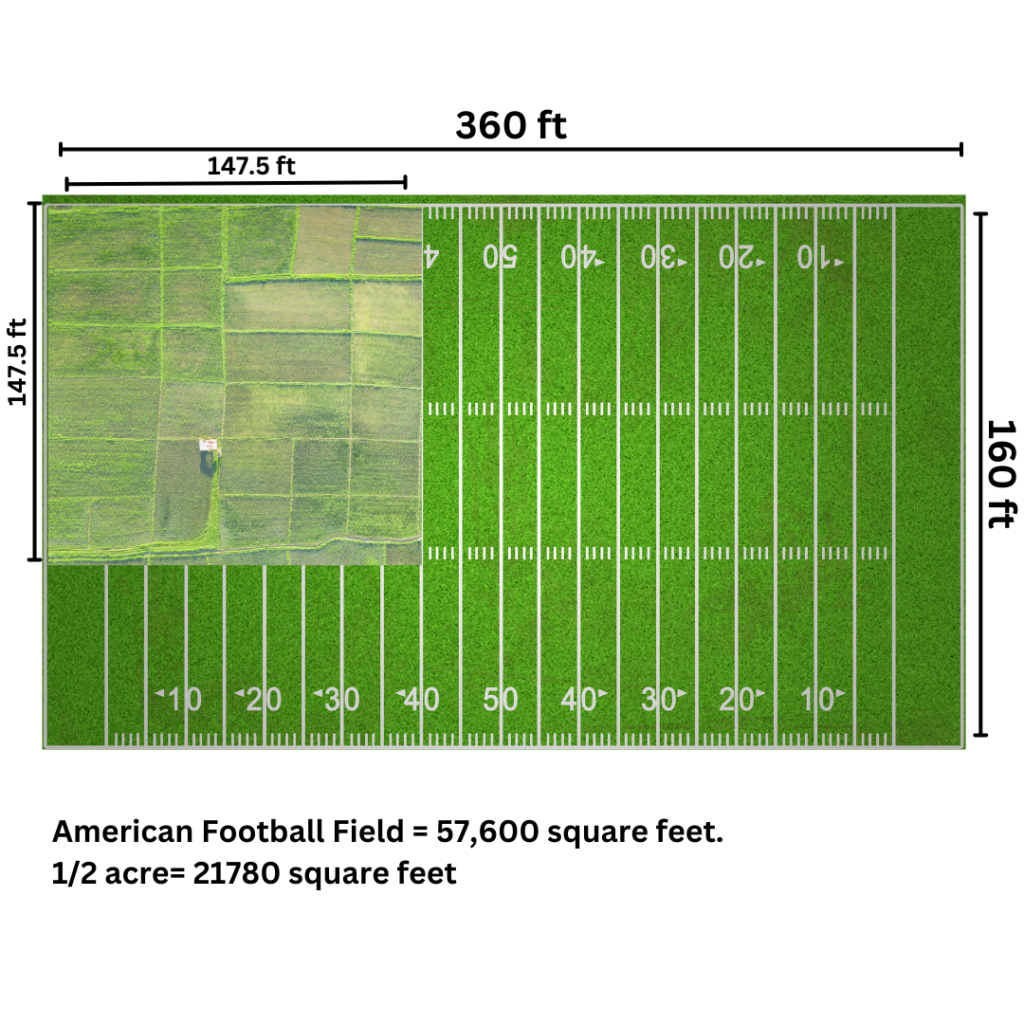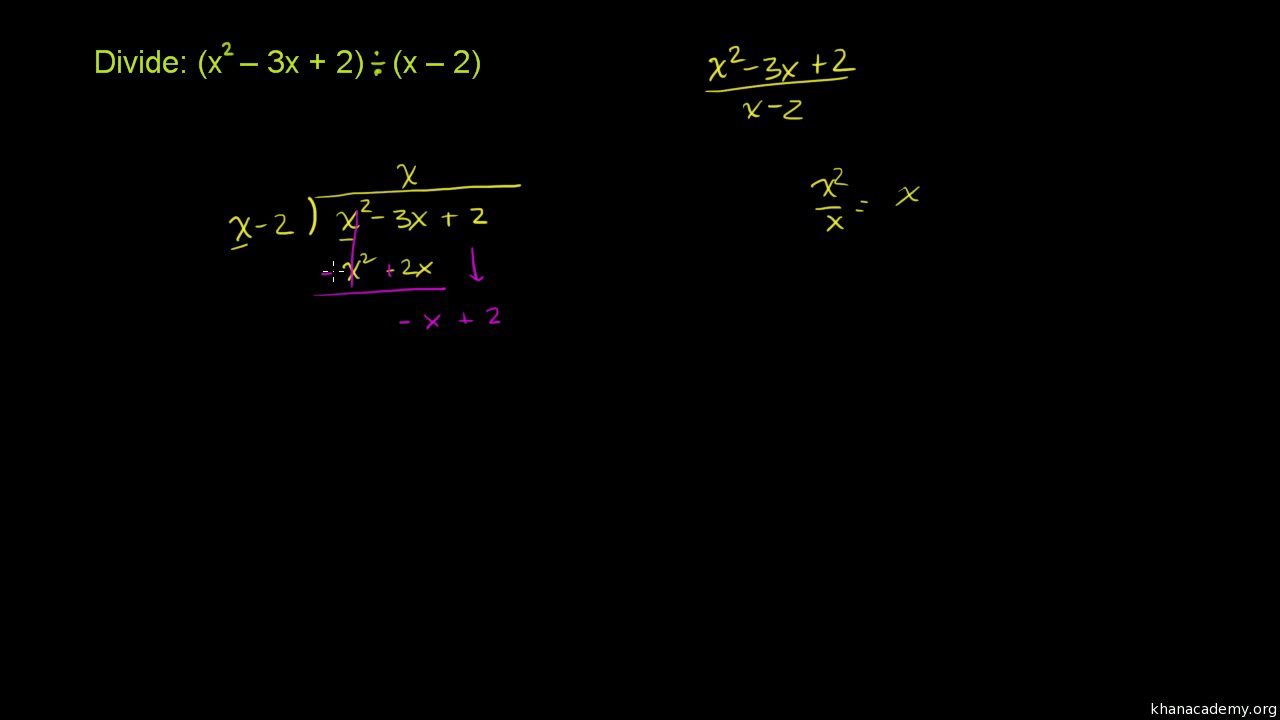Topic 1/2squared: The concept of 1/2 squared often leads to confusion, but understanding it is crucial for mastering basic mathematics. This article delves into the interpretation, calculation, and real-world applications of 1/2 squared, providing clarity and insight into this fundamental expression. Explore the nuances and ensure your mathematical foundations are strong.
Table of Content
- Understanding the Expression \( \frac{1}{2}^2 \)
- Introduction to 1/2 Squared
- Mathematical Interpretation of 1/2 Squared
- Common Misconceptions About 1/2 Squared
- Different Ways to Express 1/2 Squared
- Step-by-Step Calculation of 1/2 Squared
- Real-World Applications of 1/2 Squared
- Visual Representation of 1/2 Squared
- Importance of Correct Interpretation
- Common Mistakes and How to Avoid Them
- Advanced Mathematical Concepts Related to 1/2 Squared
- Conclusion and Summary
- Frequently Asked Questions
- YOUTUBE: .6 divided by 3 times (1/2) squared =? A BASIC Math problem MANY will get WRONG!
Understanding the Expression \( \frac{1}{2}^2 \)
The expression \( \frac{1}{2}^2 \) can be interpreted in different ways, which can lead to different results. It is important to understand the correct mathematical interpretation to avoid confusion.
Two Possible Interpretations
As \( \left(\frac{1}{2}\right)^2 \):
- This interpretation treats the fraction \( \frac{1}{2} \) as a single entity, which is then squared.
- Mathematically, this is expressed as:
\[ \left(\frac{1}{2}\right)^2 = \frac{1}{2} \times \frac{1}{2} = \frac{1}{4} \]
As \( \frac{1}{2^2} \):
- This interpretation applies the square only to the denominator of the fraction.
- Mathematically, this is expressed as:
\[ \frac{1}{2^2} = \frac{1}{4} \]
Both interpretations yield the same result, \( \frac{1}{4} \), but it is crucial to be clear about the interpretation when writing or reading such expressions.
General Case of Fractions and Exponents
When dealing with fractions and exponents, it is useful to remember the following rules:
For \( \left(\frac{a}{b}\right)^n \):
\[
\left(\frac{a}{b}\right)^n = \frac{a^n}{b^n}
\]
For \( \frac{a}{b^n} \):
\[
\frac{a}{b^n} = a \times \frac{1}{b^n}
\]
Conclusion
The expression \( \frac{1}{2}^2 \) is commonly interpreted as \( \left(\frac{1}{2}\right)^2 \) or \( \frac{1}{2^2} \), both leading to the same result of \( \frac{1}{4} \). Understanding the proper application of exponents to fractions ensures clarity and accuracy in mathematical expressions.

READ MORE:
Introduction to 1/2 Squared
The expression \( \frac{1}{2}^2 \) is a fundamental mathematical concept that often leads to confusion. Understanding this expression is essential for grasping more complex mathematical principles. This section provides a detailed explanation of \( \frac{1}{2}^2 \), step by step, to ensure a thorough comprehension.
Mathematically, \( \frac{1}{2}^2 \) can be interpreted and simplified in the following ways:
- Step 1: Recognize the expression \( \frac{1}{2} \).
This represents one half, or 0.5 in decimal form.
- Step 2: Apply the exponent.
Squaring \( \frac{1}{2} \) means multiplying \( \frac{1}{2} \) by itself.
- Step 3: Perform the multiplication.
Using basic multiplication rules for fractions:
\[
\left(\frac{1}{2}\right)^2 = \frac{1}{2} \times \frac{1}{2} = \frac{1 \times 1}{2 \times 2} = \frac{1}{4}
\]
- Step 4: Interpret the result.
The result, \( \frac{1}{4} \), represents one quarter, or 0.25 in decimal form.
Understanding the expression \( \frac{1}{2}^2 \) is crucial because it illustrates the fundamental rules of exponents and fractions. This concept is widely applicable in various areas of mathematics and real-world scenarios, making it an important topic to master.
Mathematical Interpretation of 1/2 Squared
Interpreting the expression \( \frac{1}{2}^2 \) correctly is fundamental to understanding basic mathematical principles. This section provides a step-by-step guide to the mathematical interpretation of \( \frac{1}{2}^2 \), ensuring clarity and accuracy.
When we see \( \frac{1}{2}^2 \), it can be interpreted in two primary ways:
- Interpretation 1: \( \left(\frac{1}{2}\right)^2 \)
- First, recognize that \( \frac{1}{2} \) is a fraction representing one half.
- Next, apply the exponent to the fraction. Squaring a fraction means multiplying the fraction by itself.
\[ \left(\frac{1}{2}\right)^2 = \frac{1}{2} \times \frac{1}{2} = \frac{1 \times 1}{2 \times 2} = \frac{1}{4} \]
- The result is \( \frac{1}{4} \), which represents one quarter or 0.25 in decimal form.
- Interpretation 2: \( \frac{1}{2^2} \)
- First, apply the exponent to the denominator of the fraction. This means squaring the 2 in the denominator.
\[ 2^2 = 2 \times 2 = 4 \]
- Next, rewrite the fraction with the squared denominator:
\[ \frac{1}{2^2} = \frac{1}{4} \]
- Again, the result is \( \frac{1}{4} \), which represents one quarter or 0.25 in decimal form.
- First, apply the exponent to the denominator of the fraction. This means squaring the 2 in the denominator.
Both interpretations lead to the same result, \( \frac{1}{4} \). Understanding these interpretations ensures accurate comprehension and application of the concept in various mathematical contexts. This clarity is vital for progressing to more complex topics in mathematics.
Common Misconceptions About 1/2 Squared
While \( \frac{1}{2}^2 \) is a simple mathematical expression, it often leads to misconceptions. Addressing these misunderstandings is crucial for a solid grasp of fundamental math concepts. Here are some common misconceptions about \( \frac{1}{2}^2 \) and their clarifications:
- Misconception 1: Interpreting \( \frac{1}{2}^2 \) as \( \frac{1}{2} \) multiplied by 2
Some students mistakenly believe that squaring \( \frac{1}{2} \) means multiplying the fraction by 2, leading to:
\[
\frac{1}{2} \times 2 = 1
\]
This is incorrect. The correct interpretation is:
\[
\left(\frac{1}{2}\right)^2 = \frac{1}{2} \times \frac{1}{2} = \frac{1}{4}
\]
- Misconception 2: Confusing \( \frac{1}{2^2} \) with \( \frac{1}{2} \times 2 \)
Another common error is to confuse the exponent's effect on the denominator, leading to:
\[
\frac{1}{2^2} \neq \frac{1}{2} \times 2 = 1
\]
The correct approach is:
\[
\frac{1}{2^2} = \frac{1}{4}
\]
- Misconception 3: Applying the exponent only to the numerator or denominator
Some learners might incorrectly apply the square only to the numerator or denominator:
\[
\frac{1^2}{2} \quad \text{or} \quad \frac{1}{2^2}
\]
The correct full expression is:
\[
\left(\frac{1}{2}\right)^2 = \frac{1^2}{2^2} = \frac{1}{4}
\]
Understanding these common misconceptions helps in correctly interpreting and applying the expression \( \frac{1}{2}^2 \). Accurate comprehension of such basic mathematical concepts is essential for advancing in math.
Different Ways to Express 1/2 Squared
The expression \( \frac{1}{2}^2 \) can be represented and interpreted in multiple ways, each of which leads to the same mathematical result. Understanding these different expressions is important for clarity and accuracy in mathematical calculations. Here are the different ways to express \( \frac{1}{2}^2 \):
- Fraction Form:
The most straightforward way to express \( \frac{1}{2}^2 \) is by squaring the fraction directly:
\[
\left(\frac{1}{2}\right)^2 = \frac{1 \times 1}{2 \times 2} = \frac{1}{4}
\]
- Exponent on Denominator:
Another way to express \( \frac{1}{2}^2 \) is by applying the exponent only to the denominator:
\[
\frac{1}{2^2} = \frac{1}{4}
\]
- Decimal Form:
Convert \( \frac{1}{2} \) to its decimal form before squaring:
\[
0.5^2 = 0.5 \times 0.5 = 0.25
\]
- Multiplication Form:
Express \( \frac{1}{2}^2 \) as a multiplication of the fraction by itself:
\[
\frac{1}{2} \times \frac{1}{2} = \frac{1 \times 1}{2 \times 2} = \frac{1}{4}
\]
- Inverse Form:
Express \( \frac{1}{2}^2 \) using the property of inverse squares:
\[
\left(\frac{1}{2}\right)^2 = \left(2^{-1}\right)^2 = 2^{-2} = \frac{1}{2^2} = \frac{1}{4}
\]
Each of these methods provides a valid way to express \( \frac{1}{2}^2 \), and they all result in the same value, \( \frac{1}{4} \). Understanding these different expressions helps in recognizing the flexibility and consistency of mathematical operations involving fractions and exponents.

Step-by-Step Calculation of 1/2 Squared
The expression \( \frac{1}{2}^2 \) can be calculated through a series of straightforward steps. This section outlines the detailed step-by-step process to ensure clear understanding and accuracy.
- Identify the Fraction:
Start with the fraction \( \frac{1}{2} \). This represents one half.
- Apply the Exponent:
Next, apply the exponent of 2 to the fraction. Squaring a fraction means multiplying the fraction by itself:
\[
\left(\frac{1}{2}\right)^2
\]
- Multiply the Fractions:
Perform the multiplication of the fraction by itself:
\[
\frac{1}{2} \times \frac{1}{2} = \frac{1 \times 1}{2 \times 2}
\]
Multiply the numerators together and the denominators together:
- Numerators: \( 1 \times 1 = 1 \)
- Denominators: \( 2 \times 2 = 4 \)
- Simplify the Result:
Combine the results of the numerators and denominators to get the simplified fraction:
\[
\frac{1}{4}
\]
- Interpret the Result:
The final result, \( \frac{1}{4} \), represents one quarter. In decimal form, this is 0.25.
By following these steps, you can accurately calculate \( \frac{1}{2}^2 \). This methodical approach ensures that the fundamental principles of fractions and exponents are clearly understood and applied correctly.
Real-World Applications of 1/2 Squared
The mathematical concept of \( \frac{1}{2}^2 \) is not only fundamental in theory but also has numerous practical applications in the real world. Understanding these applications helps illustrate the importance and utility of this basic mathematical principle.
- Area Calculation:
In geometry, squaring a fraction is often used to calculate areas. For example, if a square has a side length of \( \frac{1}{2} \) units, the area of the square is given by:
\[
\left(\frac{1}{2}\right)^2 = \frac{1}{4} \, \text{square units}
\]
- Probability:
In probability, the concept of squaring fractions is used to determine combined probabilities of independent events. For instance, the probability of two independent events each having a \( \frac{1}{2} \) chance of occurring together is:
\[
\left(\frac{1}{2}\right)^2 = \frac{1}{4}
\]
- Finance:
In finance, understanding exponents is crucial for calculations involving compound interest. Although \( \frac{1}{2}^2 \) might not directly apply, the concept helps in understanding how fractions and exponents work in financial formulas.
- Physics:
In physics, squared fractions are often used in formulas. For example, when dealing with scales or ratios in physical models, \( \frac{1}{2} \) squared might represent a reduction factor in dimensions, impacting calculations of volume and area.
- Engineering:
In engineering, particularly in stress and strain calculations, fractions and their squares are used to determine material properties and safety margins. For example, a material's deformation under load might be expressed as a fraction of its original length, squared for certain calculations.
- Statistics:
In statistics, squaring fractions is part of variance and standard deviation calculations. These are critical for understanding data dispersion. For instance, the squared deviations from the mean are summed to compute variance.
These examples highlight how the seemingly simple concept of \( \frac{1}{2}^2 \) is widely applicable across various fields, demonstrating its relevance and importance in everyday calculations and advanced scientific endeavors.
Visual Representation of 1/2 Squared
The expression can be visually represented in various ways to enhance understanding. Below are some methods to represent visually:
1. Fraction Multiplication Diagram
To understand squared, imagine multiplying by itself.
In fractional multiplication:
This can be visualized as:
2. Area Model
Another way to visualize is by using an area model. Consider a square where each side is of a unit.
Area of the square:
This can be represented as a small square within a larger unit square:
The blue square is of the unit square.
3. Number Line Representation
On a number line, you can show the process of squaring by first marking and then showing its product when squared:
- is marked between 0 and 1.
- When squared, it moves to on the number line.
4. Geometric Representation
Using geometry, can be depicted by dividing a shape into parts:
If a square is divided into 4 equal parts, each part represents :
The green part represents of the whole square.
Importance of Correct Interpretation
Understanding the correct interpretation of is crucial for several reasons. Misinterpreting this expression can lead to fundamental errors in various mathematical and real-world applications.
1. Mathematical Accuracy
Accurate interpretation ensures that mathematical operations are performed correctly. The expression means multiplied by itself, which results in .
Mathematically, it is expressed as:
Incorrectly interpreting it as instead of can lead to significant errors in calculations.
2. Application in Real-World Problems
Many real-world problems involve fractions and their operations. Correctly interpreting and calculating is vital in fields such as engineering, physics, and finance.
For example, in engineering, if a material's stress is halved and then squared, the resultant stress needs to be accurately determined to ensure structural integrity.
3. Educational Foundation
For students, understanding the correct interpretation of such expressions forms a fundamental part of their mathematical education. It helps build a strong foundation for more advanced mathematical concepts.
- Reinforces basic arithmetic and algebraic principles.
- Prepares students for more complex mathematical problems.
4. Avoiding Common Misconceptions
Common misconceptions, such as interpreting as instead of , can lead to persistent errors in understanding and applying mathematical principles.
Educational emphasis on correct interpretation helps prevent these misconceptions:
- Emphasize the importance of the operation order in mathematical expressions.
- Use visual aids and practical examples to illustrate the concept.
5. Consistency in Mathematical Language
Consistency in interpreting and communicating mathematical expressions ensures clear and effective communication among students, educators, and professionals.
When everyone understands uniformly, it eliminates ambiguity and enhances collaborative problem-solving.
In conclusion, the correct interpretation of is essential for mathematical accuracy, real-world application, educational development, avoiding misconceptions, and maintaining consistency in mathematical communication.

Common Mistakes and How to Avoid Them
When working with the expression , there are several common mistakes that people often make. Understanding these mistakes and learning how to avoid them is essential for accurate mathematical calculations.
1. Misinterpreting the Squaring Process
A frequent mistake is misinterpreting the process of squaring . Instead of calculating , some might simply square the numerator and ignore the denominator.
Correct interpretation:
Incorrect interpretation often looks like:
2. Neglecting the Power Rule
Another common error is neglecting to apply the power rule correctly. When raising a fraction to a power, both the numerator and the denominator must be raised to that power.
- Proper application:
- Incorrect application:
3. Overlooking Simplification Steps
Some might overlook the necessary simplification steps, leading to incorrect results. Simplifying the fraction before and after squaring can help avoid mistakes.
Steps to avoid mistakes:
- Identify the fraction: .
- Square both the numerator and the denominator: .
- Check for simplification: In this case, the fraction is already in its simplest form.
4. Misunderstanding the Concept of Squaring
Students often misunderstand the concept of squaring a fraction. Squaring means multiplying the fraction by itself, not by 2.
Correct approach:
- Understand that squaring means .
- Perform the multiplication: .
5. Visual Misinterpretations
Visual representations can sometimes lead to misinterpretations. Ensure that visual aids accurately reflect the mathematical operations involved.
Helpful tips:
- Use clear and accurate diagrams.
- Double-check visual aids against mathematical calculations.
By understanding these common mistakes and learning how to avoid them, students and professionals can ensure accurate and effective mathematical calculations.
Advanced Mathematical Concepts Related to 1/2 Squared
Understanding the expression \(\left(\frac{1}{2}\right)^2\) opens the door to several advanced mathematical concepts. Here, we explore some of these concepts and their relevance to this expression.
-
Exponentiation of Fractions:
The expression \(\left(\frac{1}{2}\right)^2\) is an example of exponentiation where the base is a fraction. This can be generalized to any fraction \( \left(\frac{a}{b}\right)^n \), which can be expressed as \( \frac{a^n}{b^n} \). For \(\left(\frac{1}{2}\right)^2\), this simplifies to \( \frac{1^2}{2^2} = \frac{1}{4} \).
-
Properties of Exponents:
Exponentiation follows several key properties, such as \( (a^m)^n = a^{mn} \) and \( (ab)^n = a^n b^n \). These properties are crucial in simplifying and understanding more complex expressions involving exponents.
-
Binomial Theorem:
The binomial theorem provides a way to expand expressions raised to a power. While directly related to \(\left(\frac{1}{2}\right)^2\), understanding how to expand binomials helps in grasping the distribution and combination of terms in polynomial expressions.
-
Real and Complex Numbers:
While \(\left(\frac{1}{2}\right)^2\) remains within the realm of real numbers, exploring exponentiation with negative and imaginary bases leads into the domain of complex numbers. Understanding \( i^2 = -1 \) and other properties of imaginary numbers extends this concept further into complex analysis.
-
Calculus and Limits:
In calculus, limits involving exponents and fractions are common. The expression \(\left(\frac{1}{2}\right)^2\) can be used to illustrate concepts like continuity and the behavior of functions as they approach specific points. Understanding the limit of \( \left(\frac{1}{n}\right)^2 \) as \( n \) approaches infinity, for instance, helps in grasping the foundational ideas of calculus.
-
Matrix Exponentiation:
In linear algebra, exponentiation extends to matrices. Although \(\left(\frac{1}{2}\right)^2\) is a scalar, understanding how matrices are raised to powers, such as \( A^2 = A \times A \), provides a broader context for exponentiation in higher dimensions.
These advanced concepts not only enhance the understanding of \(\left(\frac{1}{2}\right)^2\) but also provide a deeper insight into various fields of mathematics, demonstrating the interconnected nature of mathematical principles.
Conclusion and Summary
The expression \( \left( \frac{1}{2} \right)^2 \) illustrates a fundamental concept in mathematics: the squaring of a fraction. This operation has broad implications and applications across various fields of study.
Squaring a fraction, such as \( \left( \frac{1}{2} \right)^2 \), involves multiplying the fraction by itself. In this case, it results in:
\[ \left( \frac{1}{2} \right) \times \left( \frac{1}{2} \right) = \frac{1}{4} \]
Understanding this concept is crucial for several reasons:
- Accuracy in Calculations: Correct interpretation of fractional exponents is essential for ensuring accurate mathematical computations.
- Application in Various Fields: The squaring of fractions is used in fields ranging from physics to finance, where precise calculations are necessary.
- Foundational Knowledge: Grasping the basics of squaring fractions lays the groundwork for more advanced mathematical concepts, such as algebra and calculus.
Misinterpreting the operation can lead to significant errors, especially in complex calculations. For instance, misunderstanding \( \left( \frac{1}{2} \right)^2 \) as \( \frac{1}{2} \times 2 \) instead of \( \frac{1}{4} \) could result in incorrect results and flawed conclusions.
In conclusion, mastering the squaring of fractions like \( \left( \frac{1}{2} \right)^2 \) is a small yet pivotal step in developing a strong mathematical foundation. It is a clear example of how seemingly simple operations form the building blocks for understanding and applying more intricate mathematical theories and practices.
As we have seen, the expression \( \left( \frac{1}{2} \right)^2 = \frac{1}{4} \) is not just an arithmetic fact but a fundamental concept with widespread applications and implications. Ensuring the correct interpretation and application of such operations is vital for mathematical accuracy and competency.
Frequently Asked Questions
-
What is the value of \( \left(\frac{1}{2}\right)^2 \)?
The value of \( \left(\frac{1}{2}\right)^2 \) is \( \frac{1}{4} \). This is because squaring a fraction means multiplying the fraction by itself: \( \left(\frac{1}{2}\right) \times \left(\frac{1}{2}\right) = \frac{1 \times 1}{2 \times 2} = \frac{1}{4} \).
-
How do you square a fraction?
To square a fraction, multiply the numerator by itself and the denominator by itself. For example, \( \left(\frac{a}{b}\right)^2 = \frac{a^2}{b^2} \). If you have \( \left(\frac{1}{2}\right)^2 \), you calculate it as \( \frac{1^2}{2^2} = \frac{1}{4} \).
-
Is \( \left(\frac{1}{2}\right)^2 \) the same as \( \frac{1}{2^2} \)?
Yes, \( \left(\frac{1}{2}\right)^2 \) is the same as \( \frac{1}{2^2} \). Both expressions equal \( \frac{1}{4} \). This follows the rule that \( \left(\frac{a}{b}\right)^n = \frac{a^n}{b^n} \).
-
Why is squaring a fraction different from squaring an integer?
Squaring a fraction involves multiplying the fraction by itself, which results in a smaller number if the fraction is between 0 and 1. Squaring an integer, however, results in a larger number. For example, \( \left(\frac{1}{2}\right)^2 = \frac{1}{4} \), but \( 2^2 = 4 \).
-
What are the practical applications of squaring fractions?
Squaring fractions is useful in various fields such as probability, statistics, and physics. For example, in probability, the square of a fraction can represent the likelihood of two independent events both occurring.

.6 divided by 3 times (1/2) squared =? A BASIC Math problem MANY will get WRONG!
Divide (3 and 1 /2) squared by (2 and 1/3) squared - MANY will get this BASIC MATH question WRONG!
(3 and 1 /2) squared divided by (2 and 1/3) squared =? many will make a MISTAKE!
(4 + square root of 12) squared = ? How to Multiply Binomials
SUM = 1 squared + 2 squared + 3 squared =? Basic Math!
2Squared Book 1: Lesson 1 - Life
READ MORE:















